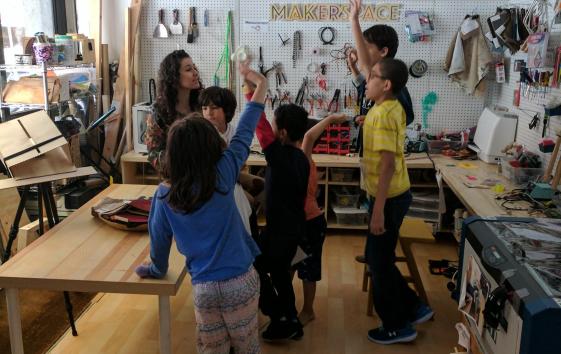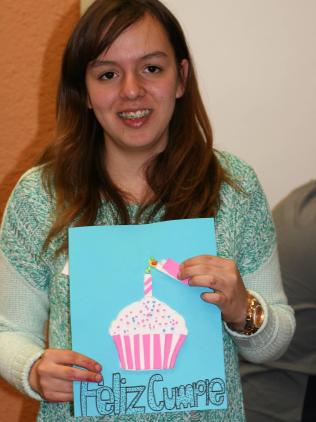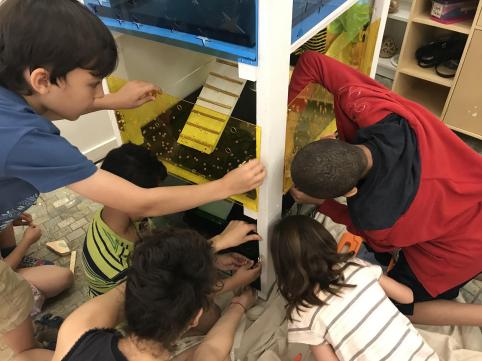
This summer, we welcomed Nancy Otero as Director of Learning at Make: Community. Her charter is to develop a model learning program especially for small groups of young people 16 and older who can benefit from acquiring the skills and mindset of makers. Soon, we will begin doing a pilot project and look forward to working with makerspaces and other partners to expand the number of groups participating in the program. In this time when COVID-19 has disrupted the education system, I feel it is more important than ever to develop alternatives that can help young people discover what they are interested in and what they can do. I envision this program as serving to help them make important decisions about what kind of work they choose to do and what kind of education they need. They can become creative problem solvers who know how to apply technology and tap their own ingenuity to address the many challenges in our society.
— Dale Dougherty, Make: Community
To learn more about this program please join our online discussion. Wednesday September 30 at 1:30 pm PDT. Register Today!
Students at Portfolio School, NYC
For humans, making is as natural as breathing. There is a history of 3.3 million years of making told by the oldest hominid-made artifact we know. Human history. For my father, making is his way to relate to the world. So fixing, improving, creating and exploring was how he would spend his time at home during my childhood. Even though I wasn’t invited to as many projects as my brother was, I participated in enough of them to see the world as something that could be made. I could imagine cutting holes or adding electronics to the stuff around me as a default nature. I didn’t have to choose making; it was mandatory in my family.
For many children who may not have making available in their families and schools, they grow up knowing the value of using their hands. According to a recent survey done by ECMC to high-schoolers, 74% of the Z generation believe a skills-based education (e.g., trade skills, nursing, STEM, etc.) makes sense in today’s world, and 63% percent said that the top place to learn is a hands-on lab.
Participants of the Makers in Residence in Mexico
Today making has permeated the educational vocabulary and priority list of millions of people. There is a global return to embodied learning and useful application of skills. Schools are moving towards project-based and play-based learning. More than 1,600 universities and 4-year colleges in the US now give the option of submitting a portfolio of work for their application. Making showcases not just what you know but what can you do with what you know.
As manifested by the COVID-19 crisis, formal education has failed to provide a common language for humans to understand and communicate with each other. All the content learned in biology, statistics and history hasn’t materialized in applied understanding. Beyond that flaw, formal education hasn’t cultivated love for learning or curiosity; on the opposite it has almost wiped them out of children’s minds.
As an example, NASA’s recruitment creativity test was used in a longitudinal study. 98% of children 4-5 years-old score at the highest of the test, something called creative genius. By the time children were 10 years old 30% scored those points, by 15 years-old only 12% and just 2% of adults are creative geniuses. The more schooling the less creative.
Today 41% of teens haven’t attended an online or virtual class since in-person school was canceled, and the International Labour Organization projects 273 million young people in NEET (Not in Employment Education or Training) in 2021. Without the physical component of schooling many young people are at risk of dropping out, taking a path where the opportunities for learning are fewer, and limiting their career in the long term.
With all this context in mind I was very excited to join Make:. In the last months I have been working on developing Make: Learning Labs, a learning experience which aims to keep young people engaged in learning, and building their future careers. Make: Learning Labs, is a modular model program that can be shared and replicated by partners where young people can learn what they want through real-world experiences, not content. They will have mentorship support, and a learning trajectory in problem-solving and project-management.
Let me introduce myself, and why I believe Make: Learning Labs is a program that can engage and develop agency to young people around the world. At Stanford University, through the magical Transformative Learning Technology Lab, I discovered educators that link making and learning, I was drawn to it immediately. But I had so many questions: Is making useful for everyone? Would everyone enjoy it? How is it related to learning? The opportunity to experiment with these questions arrived soon enough.
My friend Gabriela Calderon, PhD. was studying the effect of the war on drugs in Mexico. She told me that because of the low engagement that teenagers had with schools, a big percentage of them will end up joining dangerous activities. We decided to fund FAB!, a non-profit that worked with high-school students from underserved communities. The goal was to give that group a useful activity to engage with. It ran as an after-school program, a custom program modeled after the Makers in Residence designed by Prof. Paulo Blikstein.
Project from FAB! Lamp to help small kids to fall asleep
During the program, participants learned making skills, used design thinking to find a problem they care about, prototype a solution using their new skills, and shared their project with the community. To answer our questions we decided to run the program as a randomized control trial, meaning that we would partner with a school and invite just a randomized group of their students. How would teenagers respond if they don’t already identify with making or have an interest in technology or experience learning to do projects? Would they want to participate if given the opportunity? Would they stay in the program when things get hard?
After running this project for three years, we learned that these teenagers liked making and they can do incredible projects even without any previous experience or technical background. I witnessed the development of a device that can be installed in cars to measure a driver’s cognitive abilities before being permitted to drive. The goal of this team was to avoid car accidents. This group of teens (some of which have just accessed a computer in their school lab) interviewed people, programmed an app, and connected the output of the app with a microcontroller to block a car key. I was sold. My next question was how to amplify the experience with academic learning?
Project: Shocking-alarm clock. Think twice before you snooze it!
I joined a phenomenal organization in NYC: Beam Center with the goal to bring making to teachers. I created a program for public high-schools’ teachers, the goal: bridging making and academic learning through project-based learning. Teachers partnered with artists and engineers to design big projects where students could apply the curriculum. The program grew and has reached thousands of students and more than 100 teachers. But those activities occurred a few times per year, even when the improvements in students’ learning and engagement were visible. I started wondering if making was a complementary activity or its own way of learning. How would it look like for a school to turn all its curriculum into projects?
Teachers at Beam Center Learning Robotics
I became the Founding Director of Learning Design and Research at Portfolio School, a dream come true. A project-based learning independent micro-school in NYC. With the mission of redesigning schooling given everything we know today about learning; we eliminated tests, grades, 45 min schedules and created a learning framework where making became a tool to apply and internalize powerful human ideas. Four years later I know making is a fundamental piece of learning, a piece that gives tangible form to a legacy of human ideas while adding personal meaning. For everyone, since kindergarten.
Project: Guinea-pig Castle. Portfolio School
I also know about all the obstacles that schools and teachers face implementing making. That’s why we are developing Make: Learning Labs with four main characteristics:
- Creative freedom for anyone to design their own making activities, and get inspired, use or tinker with already posted making activities,
- A research-and-practice-based framework and developmental trajectory for problem-solving, and project-management that binds together the making activities,
- A cultural relevant compass on the activities and pedagogy that guides the creation and implementation of making activities for inclusion,
- Modularity to be completed in four months, a school year or anything in between.
When we make, our flow of thought answers to the changes and feedback of the materials, tools and projects which we work with. These tools and materials think in us, as we think through them. Learning how to use scissors makes the world cuttable, learn how to code and you’ll see the world computable. Learn how to make projects and you’ll see implementable solutions everywhere. We want younger people to think about the future and be able to make those thoughts a reality. Anyone can become a maker and any maker an innovator. The Maker community rolled their sleeves and helped make supplies for hospital and essential works. This is a call for the Maker community to help again, to help our young people to find their purpose.
We are looking for partners that want to implement the program in their school, makerspaces, community centers, etc. This week, we’ll be hosting a discussion around Learning Labs. If you are interested in this initiative please fill this survey. We are looking forward to talking to you, more information to come soon!
ADVERTISEMENT












